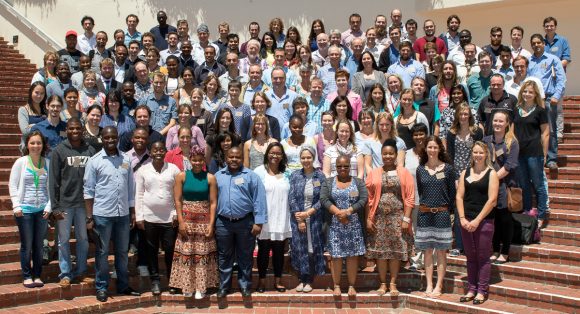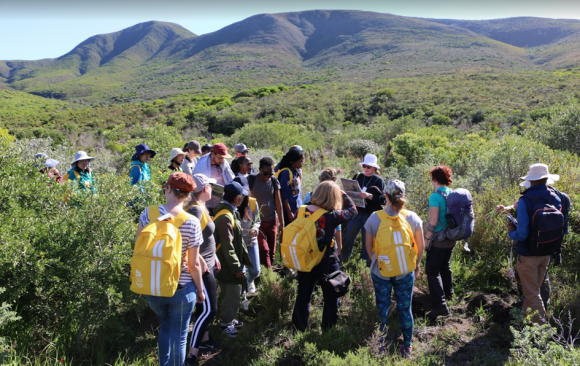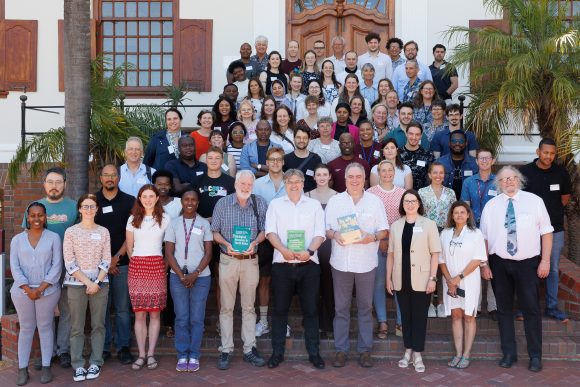24 November 2015 | By John Measey
South African’s top invasion scientists met last week for the Centre for Invasion Biology’s annual Research Meeting. The meeting, which was held from 12 to 13 November 2015 in Stellenbosch, brought together C·I·B post-graduate students, senior academics and partners of the Centre.

The meeting was opened by Laura Meyerson, Professor of Restoration Ecology at the University of Rhode Island and science advisor on the C·I·B Steering Committee, with her keynote address titled Phragmites australis: a model for plant invasions. Students presented their work in research pods with diverse topics ranging from human perspectives of alien species; impacts of invaders in freshwater and fynbos ecosystems; to invaders hiding in our cities. Adding gravitas to the programme was Tony Ricciardi, from the McGill University, Canada, who shared his thoughts on the field of invasion science in an address titled “The future of invasion science”.
Each year the Centre awards a travel grant to the best PhD and best MSc presentations at the meeting. This year Giovanni Vimercati received the travel award for best PhD for his research on the invasion by the guttural toad (Amietophrynus gutturalis) in Cape Town. “I hope to use the award to visit Mauritius and Réunion islands. The guttural toad was introduced to the islands 100 years ago as a biological control against mosquitoes. Unfortunately, it is now a serious invader on the islands. I intend to replicate some of the analyses there that I am currently using on the guttural toad populations in Cape Town.” says Giovanni. Susan Canavan was named winner of the best MSc with her project on the risks associated with the growing popularity for alien bamboos in South Africa and globally.
The visiting international science advisors (Piero Genovesi & Laura Meyerson) were full of praise for the quality of research presented by the 51 students.
According to Laura Meyerson, “the Annual Research Meeting was among the most innovative and cutting-edge meetings that I have participated in terms of science, communication, outreach and mentoring. The students employed exciting new analytical and graphical approaches that elevated the level of science being conducted and challenged the participants to follow suit. The inclusion of the infographics as communication and outreach tool was both effective and potentially transformative both for the students and the public. In summary, this is a very impressive group at the leading edge of invasion science, wow.”


